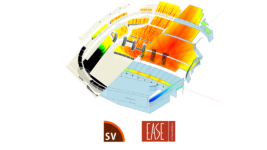LIVE
24 May 2023
AWAKENING AT WYNN LAS VEGAS
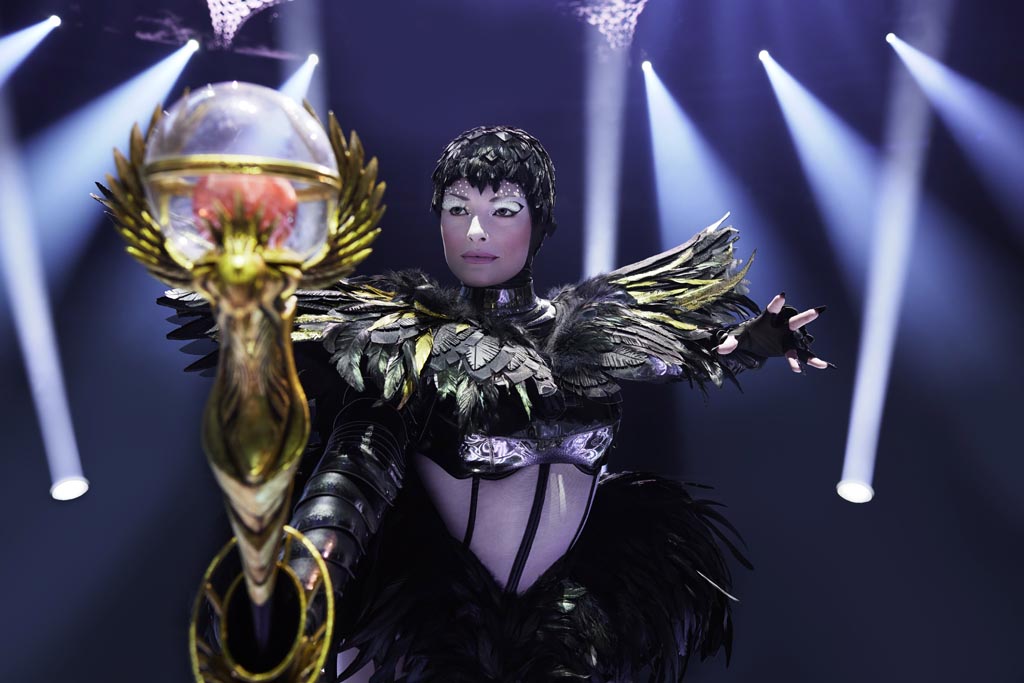
Subscribe to CX E-News
“It surely must be the most technically advanced show being done on the planet.” A bold, yet undeniably accurate statement from Paul Kieve, Illusion Designer for Wynn Las Vegas’ feature show, Awakening. Before we even begin to discuss the multimillion-dollar inventory of drool-worthy, state-of-the-art production gear the crew has the pleasure of working with, it doesn’t take long to conclude that Kieve is probably right.
Restoring love and beauty to the world is a gargantuan task for Awakening’s heroine IO and her two fellow travellers, Bandit and Boo. Bringing this monumental tale to life from behind the scenes could quite possibly be double that. Whatever double gargantuan is. Regardless, Awakening, at least from the production perspective, spins a tale of how the unimaginable becomes imagined.
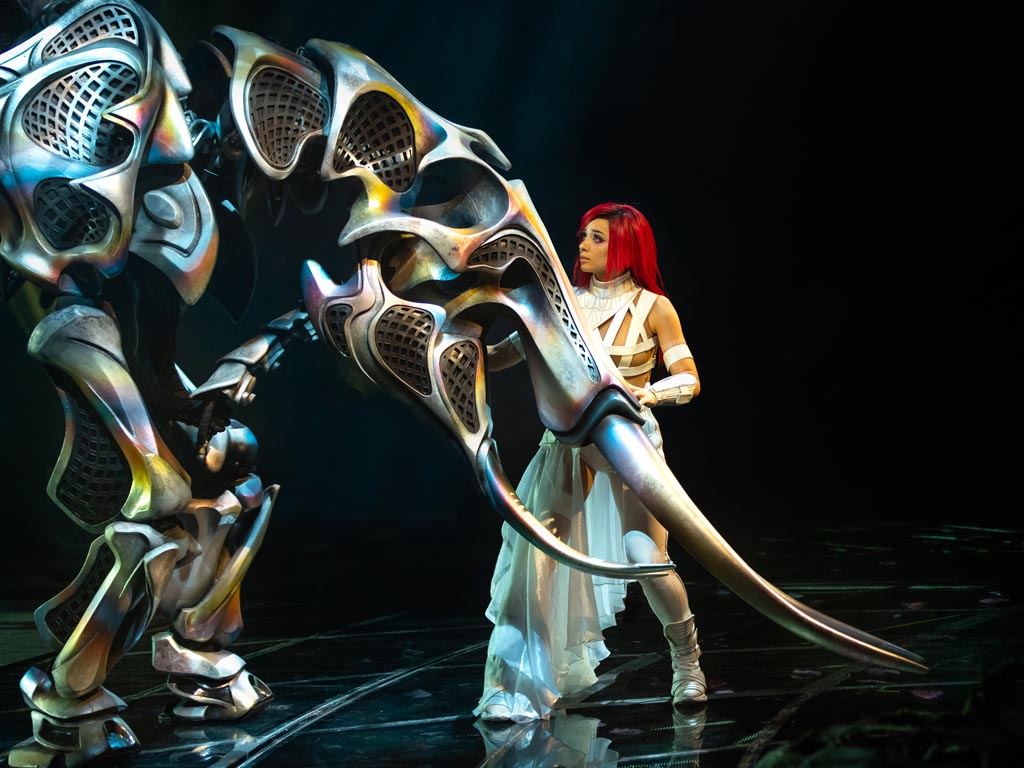
It’s been years in the making: the script alone was written over five years ago. By November 2020, once Awakening’s designers and creators knew what they needed and who they wanted to pull it together, Australian lighting designer, Mitchell Fenton, was called to duty in Las Vegas, Nevada, where the challenges as Associate Lighting Designer of Awakening in all its magical and mystical glory, would start to unravel. As if a show on such a spectacular scale wasn’t going to be challenging enough, the production team, like the rest of the planet at the time, was also facing those brought courtesy of a global pandemic. Figuring out what equipment and supplies were needed to get the job done was one thing, being able to order supplies and afford them was quite another.
The existing theatre at Wynn Las Vegas was gutted and conceptually re-designed with a custom fit out for Awakening. The Meyer Sound PA system designed specifically to capture and immerse the audience in the powerful original musical score, composed by Brian Tyler and Sound Design by Peter Hylenski. Lighting Programmer Eric Marchwinski and Mark Humphrey, enlisting the game-changing grandMA3 lighting console, came on board by recommendation of Director Baz Halpin.
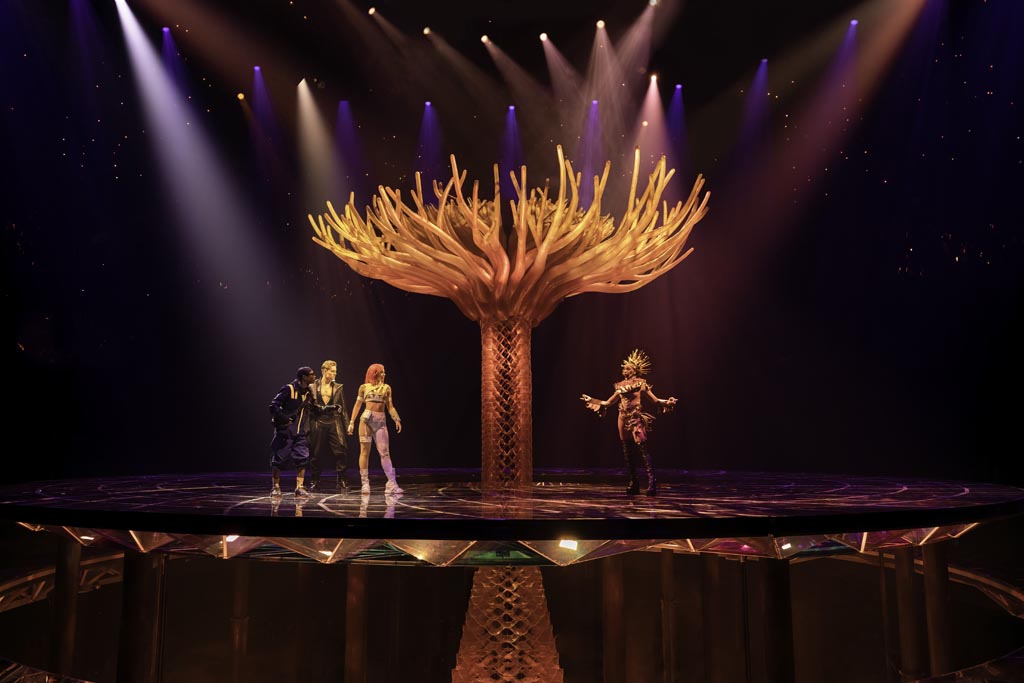
Jules Fisher + Peggy Eisenhauer, the Lighting Design dream team for Awakening, may have encountered early scepticism towards working with both a programmer and control platform neither designer had any prior experience with, but the remarkable capabilities of the grandMA3 combined with the support from MA Lighting, ACT (supplier) and Marchwinski was second to none, giving the Lighting Design team the confidence and the safety net, they needed to pull off such an epic design.
Staying on top of developmental and software updates for the grandMA3 was paramount for the enormous process of programming the lighting and video. The console has proven itself as an extremely powerful workhorse.
Boasting a massive multi-touch fully configurable screen, providing instant access to programming tools, is just one aspect of the new and improved user experience for this console. “The Selection Grid feature on the grandMA3 is excellent and integral to Awakening’s lighting programming, as there are over 500 moving lights in the room,” adds Fenton, when discussing the upgrade from tried and tested grandMA2 to the latest grandMA3 full-size console.
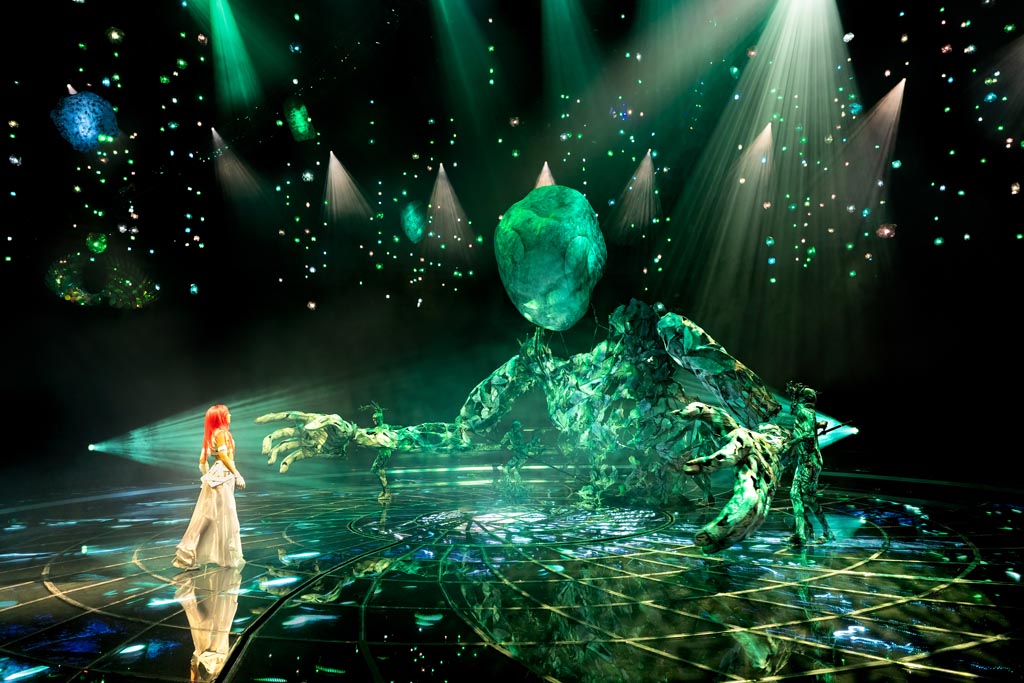
Ayrton reigns as the predominant fixture manufacturer for the show, with 139 Ayrton Huracan LT (long throw) and 33 Ayrton Eurus-S on the floor. There is no exaggeration to Mitchell Fenton’s 500+ count. In addition to the Ayrton fixtures, excluding set electrics, the show also includes:
- 45 TMB Mozart One UV LED
- 54 TMB Solaris Flare Q Plus
- 60 MAC Aura XB
- 24 Clay Paky Sharpy Plus
- 43 Martin Viper Profile
- 6 Martin Viper Performance
- 36 Vari Lite 3000
- 66 Vari Lite 3500
- 600m of LED Pixel Tape
Simply put, a ‘workhorse’ of a console is a definite necessity, but perhaps a key feature for this team would be grandMA3’s promise of being the “most flexible playback platform MA Lighting has ever produced”. Both the lighting and the video systems for Awakening (in addition to the video’s control coming from a disguise D3 Media Server) would all be on the grandMA3 system, in terms of playback.
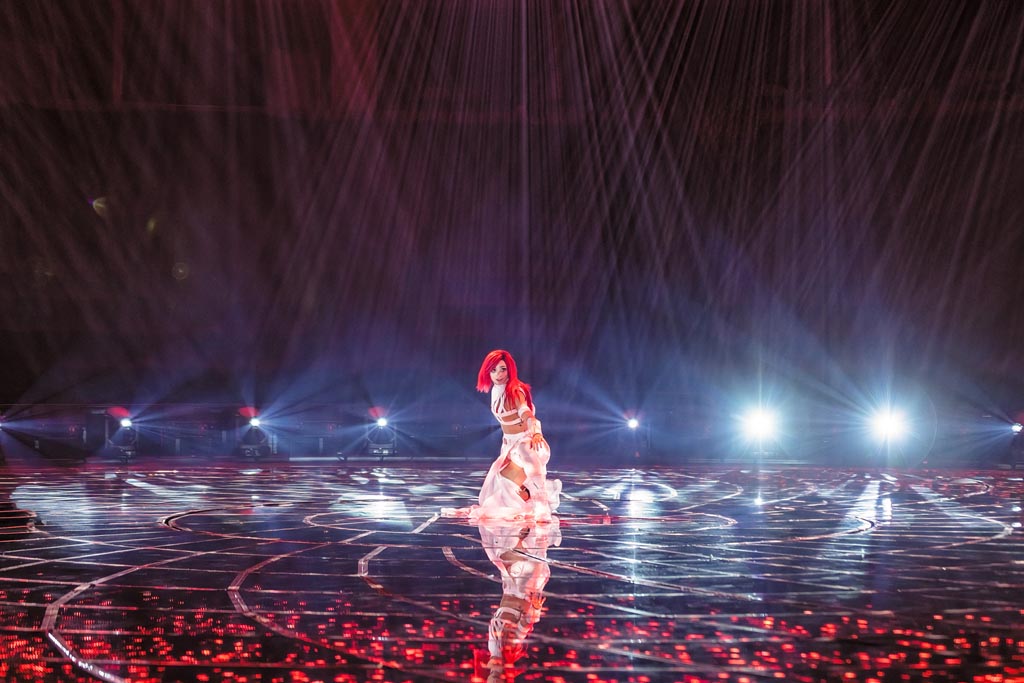
With so many fixtures in play, and the elaborate effects and scenery constantly shifting, Fenton pays respect to the invaluable zactrack automated tracking system: “We couldn’t have done the show without it. The three main characters, IO, Boo and Bandit, have zactrack trackers on them for the entire show,” he explains. The zactrack tracks and represents performers in a 3D computer model. Based on this input, various devices are then controlled to point, follow and focus automatically.
“Its main function, however, is for lighting and following the actors around. Like a follow spot, it’s used as a storytelling tool, lighting who we want it to light, following who we want it to follow”, explains Fenton.
The grandMA3 receives the telemetry from the zactrack and triggers the Huracans to follow the principal actors. For scenery and background, the VLs and Vipers are utilized within the zactrack system.
As if the spectacular lighting design for this production isn’t already pushing boundaries, a laser show is incorporated, beautifully complimenting the narrative without detracting from the other elements. Lawrence Wright demonstrates laser design wizardry, which simply put, “looks amazing.”
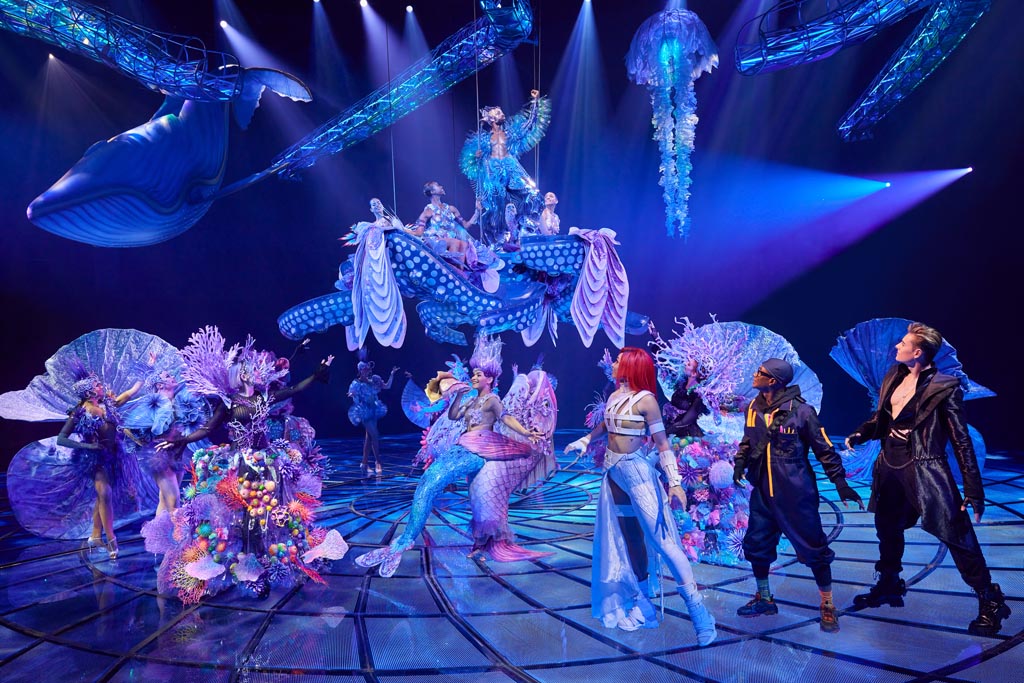
For safety, the lasers operate on their own system, and despite running on timecode from the playback, this system is overseen throughout the entire performance by a fully trained operator, ensuring they fire safely, correctly and on time, every time.
The lighting, video and laser technical and design team collaboration was huge, resulting in a well-integrated and impressive visual experience for both the production team behind the scenes and the audience watching it unfold.
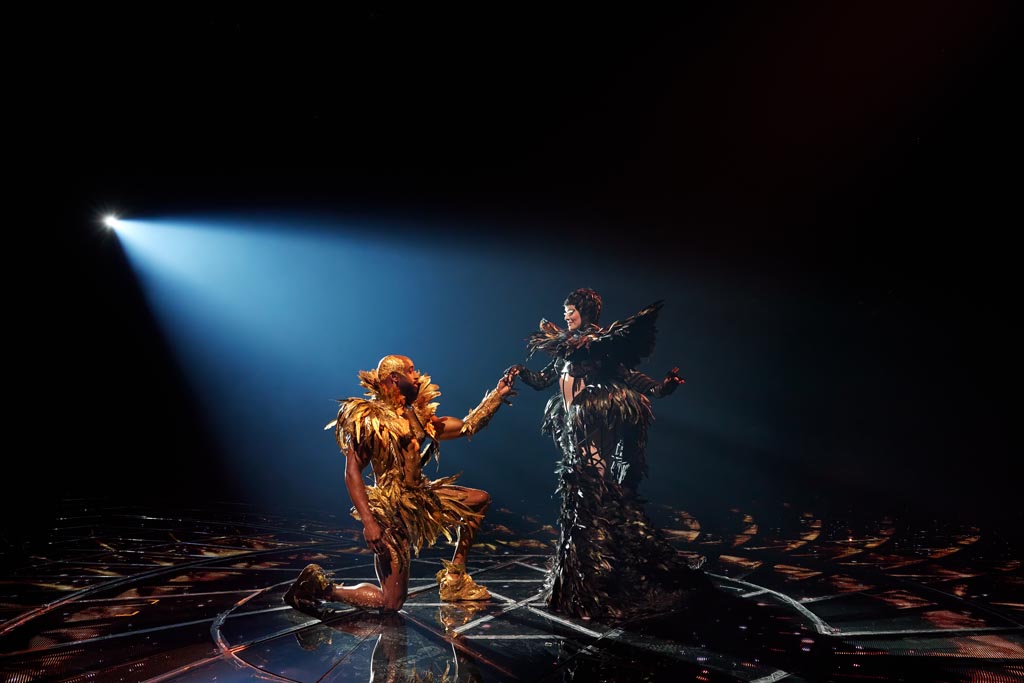
“For the Awakening cast and crew, staging the show in the round, where audience seating is arranged in a circular configuration around the stage, comes with its fair set of challenges. But the concept of ‘challenge’ in show business, is another way to say ‘fantastic creative opportunity’. Creative liberties are taken throughout costume design, sound design, and choreography, as well as the creation and execution of illusion. The constant change in the backdrop (audience) and the fact that each audience member would have a different perspective allowed the designers to play across all facets. Collaboratively, the creative team ultimately must achieve one thing when approaching the stage format; to be able to see and understand the whole story when it’s unravelling at different angles and sides of the stage in the round, and achieve an equal experience for every audience member. From narration to design perspectives, everyone sees and experiences a different angle. Different perspectives can be a big challenge,” Fenton explains.
A custom-built LED floor, a reflective glass stage surface, and a 360-degree transparent- panel LED screen wrapping around the whole venue (situated just above audience seating) would require extensive technical and design research, production and examination of photometric drawings and angle analysis from the lighting design team, as well as heavy technical and design integration work across both lighting and video teams. The key for the lighting design team is to maximise creative potential working with a glass floor, whilst eliminating the opportunity for fundamental error, such as the potential blinding of audience members with any undesirable reflection of the lights.
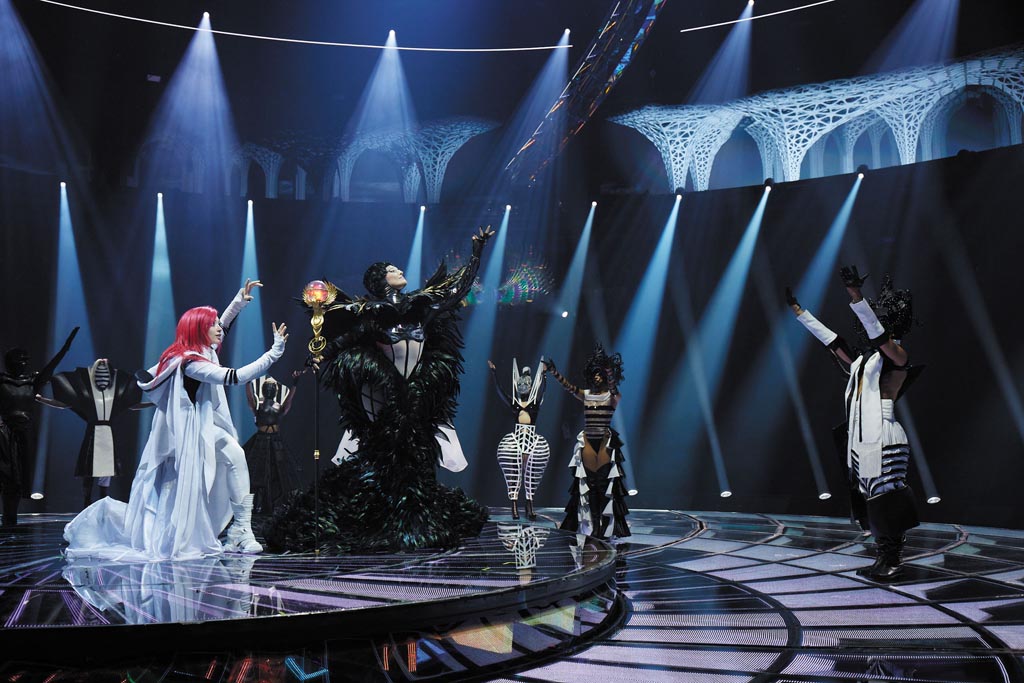
From Mitchell Fenton’s account, Awakening’s production scope from the top down essentially involves the following: a circular theatre, so the hanging space for lights is very exposed and quite limited; a 360-degree LED screen, which seeks to enhance but cannot detract, from the action on stage; actors performing acrobatics and dynamic movement across the stage in spectacular costume, set amongst large-scale puppetry (noting here, the puppets are a work of art in their own right. As Fenton’s craft is to illuminate the subject matter, he describes the finish of the puppets as exquisitely detailed, creating an amazing surface for the lights to hit, courtesy of Puppet Designer and Producer, Michael Curry).
All these layers are manipulated above a round, glass (essentially mirrored) floor. Care must be taken not to reflect light beams off the glass floor and into the eyes of actors or the audience, and it also cannot reflect anything which would disseminate the crucial element of illusion, meticulously designed courtesy of Illusion Designer, Paul Kieve.
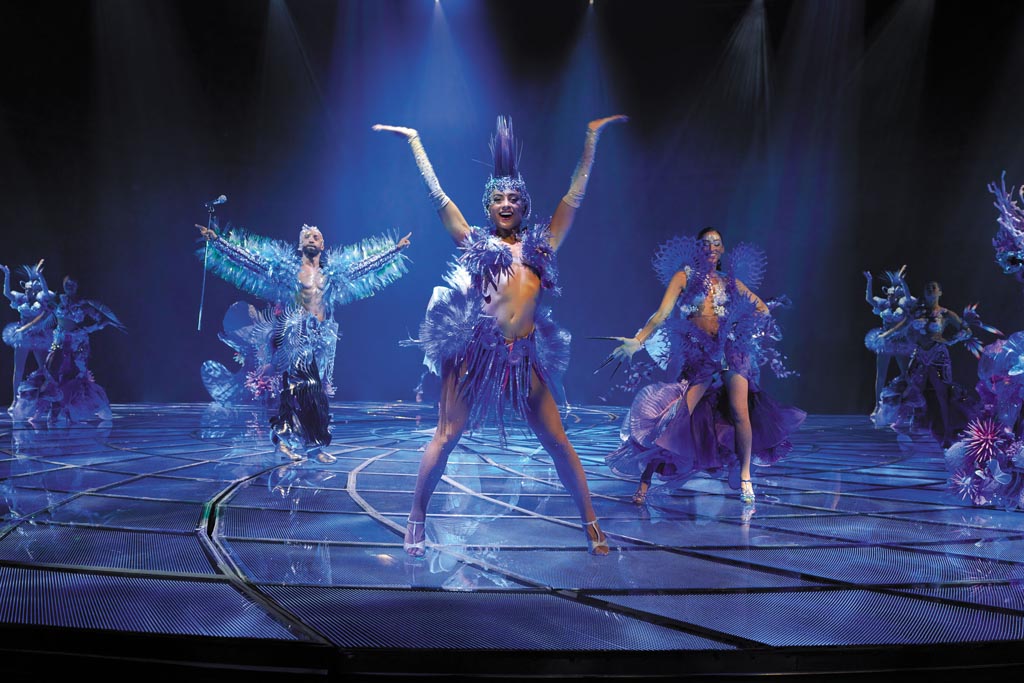
Lighting philosophy for illusion is based heavily on the concept of the visible and the not, therefore, working hand-in-hand to achieve Kieve’s creative vision was crucial. “Precision is paramount. Something the audience experiences in the space of five seconds can sometimes take days or weeks to achieve that moment to perfection. It’s all based around what you see and what you don’t see”, explains Fenton, who along with the rest of the lighting design team, spent countless hours in illusion workshops working closely with Kieve to perfect each moment of magic throughout the entire production.
Photo credits: Wynn Las Vegas
Subscribe
Published monthly since 1991, our famous AV industry magazine is free for download or pay for print. Subscribers also receive CX News, our free weekly email with the latest industry news and jobs.

